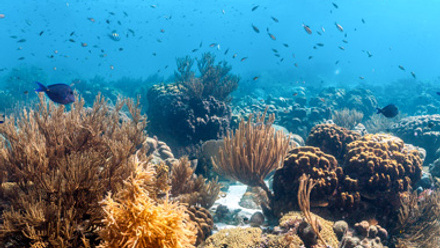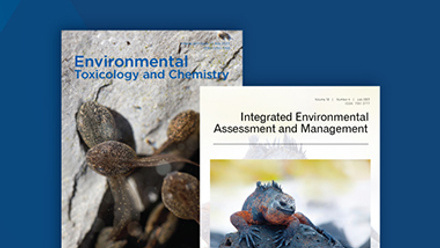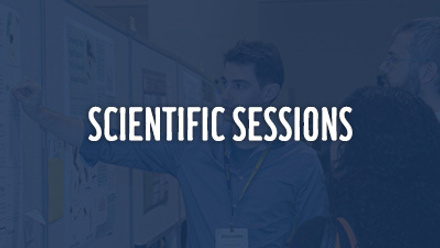Ecological Theory and Concepts in Ecotoxicology Special Issue Now Available
This article has been modified from an Editorial by Mirco Bundschuh published in Environmental Toxicology and Chemistry and repurposed with permission.
Jen Lynch and Helen Callow, SETAC
A new special series, “Ecological Theory and Concepts in Ecotoxicology,” has published in Environmental Toxicology and Chemistry. The series is composed of selected theoretical and experimental contributions on how ecological processes, concepts, models and theories support research related to contaminant effects or risk assessment of chemicals and vice versa. Studies targeting ecological responses to multiple stressors and discussing the magnitude of ecological effects caused by different stressor classes are at the heart of this initiative.
The collection includes review articles, critical perspectives and experimental studies. Ralf Schäfer and colleagues consider integrating the research fields dedicated to mixture toxicity and multiple stressors with those seeking to predict the joint effects of chemical or nonchemical stressors, since the two face similar challenges and rely on similar tools and methods.
Guest editor Micro Bundschuh et al. discuss ecological processes relevant for the development of populations and communities after or during exposure to contaminants, ultimately aiming to parameterize risk assessment models to inform ecosystem management.
Two separate papers, one with lead author Jonas Jourdan and the other by Daniel Grabner and colleagues, target cryptic species, which are species that are morphologically virtually similar but genetically different, and parasites, respectively, in the field of ecotoxicology. Cryptic species are often studied in an ecological and evolutionary context, but they have not been as well considered in ecotoxicology. The question of whether the ecological differentiation and sensitivity of closely related cryptic species is particularly relevant for conservation research and regulatory ecotoxicology is nicely explored by Jourdan et al. Similarly, parasites may act as additional biotic factors modulating host reactions in ecotoxicological studies when one is measuring the response of organisms to stressors, including contaminants. Against this background, Grabner et al., introduce the most important groups of parasites occurring in organisms commonly used for both laboratory and field ecotoxicological studies.
In their literature review, Soizic Morin and Joan Artigas discuss a set of ecological functions performed by aquatic microbial communities and their response to contaminants, especially pesticides. The authors point out that most studies were performed using benthic freshwater organisms, with most research focusing on autotroph- and heterotroph-dominated communities.
In their experimental study, Verena Schreiner et al. explore the value of artificial substrates for decomposition studies. This research team uncovered a weak correlation between standardized and natural substrates for two ecosystem functions (i.e., microbial and total decomposition).
Eric Bollinger and co-authors explore another analytical tool that is often employed in food web ecology, namely, stable isotope analysis. Although the authors uncover significant (but marginal relative to other factors) changes in the trophic enrichment factor (i.e., the offset in stable isotope signatures of a consumer relative to its diet) due to contaminants, they consider that stable isotope analysis is a robust tool to detect indirect toxicant effects in food webs.
Rebecca Fisher and David Fox propose the no-significant-effect concentration (NSEC) as a substantial improvement relative to the no-observed-effect concentration, because the NSEC decouples the estimate from a direct dependence on the placement of treatment concentrations and admits statements of precision of the resulting toxicity estimate.
Marcos Krull addresses the joint impact of habitat fragmentation and mercury on snails. He concludes that mercury can enhance the effects of habitat fragmentation by changing movement, foraging behavior, and search efficiency. Huize Guan and colleagues stress the critical role of nutrients, in the form of phosphorus, in the response of algae toward chemical stressors, exemplified by lead.
Louise Stevenson et al. link adverse outcome pathways to the dynamic energy budget theory, with the aim of forming quantitative predictions of chemical exposures to individuals.
Johannes Raths is first author on an article that explores the role of dietary exposure in the bioaccumulation of systemic fungicides in leaf-shredding amphipods. The authors use ecological concepts to explain a mismatch between predicted tissue concentrations determined from laboratory-based experiments compared with measured concentrations of systemic pesticides in gammarids during monitoring studies.
Connor Olson et al. develop a mathematical model to estimate the biotransport of contaminants from aquatic to terrestrial ecosystems through emerging insects. Modeling outputs suggest that sublethal contaminant effects on insect biomass potentially control this exposure pathway efficiently—a finding that requires further verification. In a linked study, Johanna Kraus and colleagues propose an assessment tool, which considers ecological and economic decision trees, to aid in the design of contaminant effect studies for linked aquatic–terrestrial insect-based food webs.
This special series highlights the relevance of the ecological perspective in many areas of chemical stress–related research and applications. In his related editorial, Bundschuh expresses hope that “this collection of articles will further stimulate exchanges among ecologists and ecotoxicologists with the aim of better understanding and ultimately protecting the health and integrity of the environment.”
Author's contact: [email protected]






